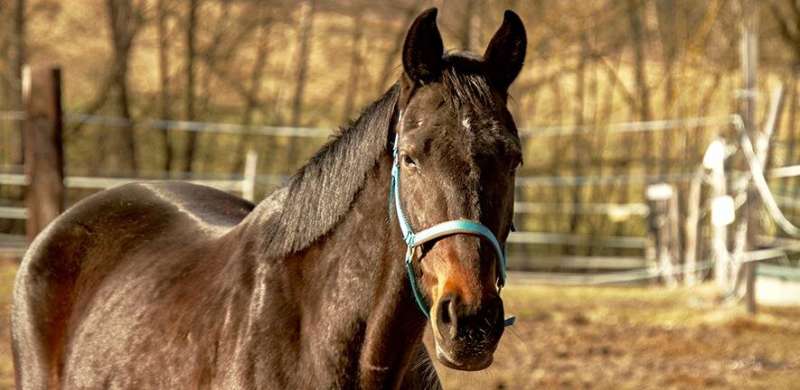Study highlights 'unbridled globetrotting' of the strangles pathogen in horses

In the largest ever study of its kind into an equine pathogen, scientists in 18 countries used the latest DNA sequencing techniques to track the bacteria responsible for a disease called 'strangles' in horses around the world.
The results, published today in the journal Microbial Genomics, provide evidence of the important role played by the movement of horses in spreading this disease, providing new opportunities for interventions that will prevent future outbreaks.
Strangles, caused by the bacteria Streptococcus equi, is the most frequently diagnosed infectious disease of horses, with 600 outbreaks estimated to occur in the United Kingdom each year.
Streptococcus equi invades the lymph nodes of head and neck of horses, causing them to swell and form abscesses that can, in around 2% of cases, literally strangle the horse to death. Some of the horses that recover from strangles remain persistently infected. These apparently healthy animals shed bacteria into the environment and spread the disease to other horses that they come into contact with.
Using standard diagnostic testing, the Streptococcus equi strains look almost identical. But by carefully examining the DNA of the bacteria, the team were able to track different variants as they spread across the world.
The research used the new online Pathogenwatch resource, developed at the Wellcome Sanger Institute, to visualize and share genome data to track the course of infections.
"Piecing the puzzle together, we showed that cases in Argentina, the United Kingdom and the United Arab Emirates were closely linked. Along with other examples, we provide evidence that the global trade and movement of horses is helping to spread the disease," said Professor Matthew Holden of the University of St Andrews, who was involved in the study.
"This study shows once again the power of genomic data to uncover the fine detail of pathogen transmission locally and globally," said Professor Julian Parkhill in the University of Cambridge's Department of Veterinary Medicine, who was involved in the study.
He added: "Using whole genome sequences we can track the movement of pathogens with very high precision, showing how and where to intervene to prevent the disease spreading."
Strangles was first described in Medieval times and, with the exception of Iceland, affects horses in all corners of the world. The freedom from this disease enjoyed by Iceland is by virtue of a ban on the import of horses, which has been in place for over 1,000 years.
"This has been an incredible team effort, which was only possible through the collaboration of leading researchers from twenty-nine different scientific institutes in eighteen countries," said Dr. Andrew Waller of Intervacc AB.
Horses are transported all over the world as they move to new premises or attend competitions and events. New cases of Strangles can be prevented by treating carriers before they pass on the bacteria.
More information: Catriona Mitchell et al. Globetrotting strangles: the unbridled national and international transmission of Streptococcus equi between horses, Microbial Genomics (2021). DOI: 10.1099/mgen.0.000528
Provided by University of Cambridge




















